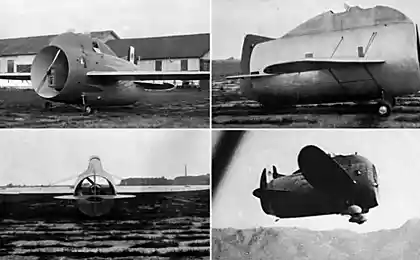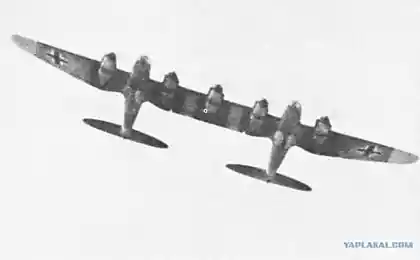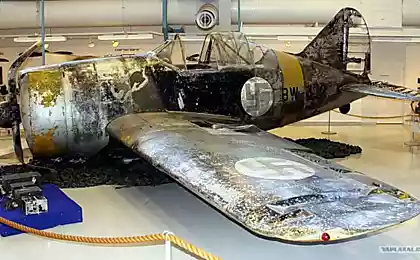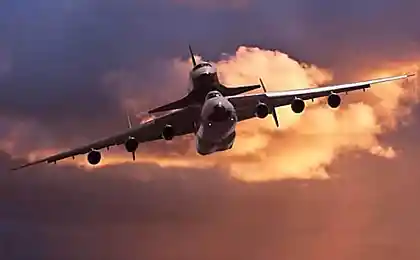4431
Antennae lightning rods on the aircraft (11 photos)
One blogger, who works in aviation and told some interesting details about the lightning rod antennae mounted on modern aircraft.
Pleasant acquaintance.

Author: Well, no, not exactly something you have to. But once you understand that here it would be necessary to tell you about the very tendrils.
To smaller issues, explain the first part of the rest. Eye with a white plastic - it's some kind of a tricky dish defendant "friend or foe". Plane a military Tu-134. He nadot.
Transparent glass cap is light. Something like envelope or combatant fire.
Red sticks down - this trailer fairing inclusion of neutral gas. The idea is that in the case of aircraft landing without landing gear on the tum when you touch the surface of the wing fairing destroyed, trailer will give a signal, and wing tanks will yield pressurized nitrogen. To a pair of kerosene burned immediately. The system is installed in our forty years
before were put on imported equipment (there's only recently have attended similar).
Now more about the sticks-whisk.

Such picturesque brush metal wire need to get rid of the aircraft static electricity in flight. The plane is covered with paint because, Koya has a dielectric. And with the rapid flight and air friction inevitably accumulates charge. A speed of something big. And that is static electricity back into the air drain, and need dischargers. They are installed in different places - one where udumali. For example, at the ending of the trailing edge of the stabilizer:
That's on the back of the cowl drive stabilizer:

It should be noted that such an outrage was not always. Already on the Tu-154 has become a cultural arresters - raspushёnnye upryatyvalis ends in a small (about a centimeter in diameter), the tapered end of a rubber tube insulator is open only from behind. Delay was just seven, and some flight engineers meticulously considered delays on the wingtips. But somehow ladders to climb the stabilizer and count the wires there, they did not ask.
More to get rid of static on the chassis hanging metal cables, koi have been reset to the static surface after planting. However, these measures did not work perfectly, and upon arrival of the Tu-154 I periodically invigorate gentle discharge. Or, so I thought, when I climbed on the ladder play off the pressure in the accumulator reverse.

On foreign cars, as usual, all the more cultured.
Here arresters on the wing of Boeing-737NG:

They look like plastic sticks. Some at the ends of the belt has a yellow plastic.

Here they are with their task to cope better - from cars I did not cringe :) Although the chassis there is nothing to hang.
The keel:

At Airbus, as more electric aircraft mounted more fuses

The documentation Airbus write about dischargers more and that their use reduces the mutual communication and navigation systems.
Normal resistance fuses is considered from 6 to 120 MW (200 or other models).
They are simply replaced - should loosen / tighten only one screw.
Arresters have probably all bystroletayuschih aircraft.
That's 340 th Emirates also:

On zakus We still have questions with lightning. As a rule, if it gets on a plane, nothing terrible happens. Nothing breaks.
Is that a zone input and output bits on the surface of the aircraft slightly melted.
Here's how it looked on the stabilizer Tu-154:

And this is - there on the edge:

On foreign cars like the following I have not seen so clearly expressed. Here are our discharge (n) iki.
Source: lx-photos.livejournal.com
Pleasant acquaintance.

Author: Well, no, not exactly something you have to. But once you understand that here it would be necessary to tell you about the very tendrils.
To smaller issues, explain the first part of the rest. Eye with a white plastic - it's some kind of a tricky dish defendant "friend or foe". Plane a military Tu-134. He nadot.
Transparent glass cap is light. Something like envelope or combatant fire.
Red sticks down - this trailer fairing inclusion of neutral gas. The idea is that in the case of aircraft landing without landing gear on the tum when you touch the surface of the wing fairing destroyed, trailer will give a signal, and wing tanks will yield pressurized nitrogen. To a pair of kerosene burned immediately. The system is installed in our forty years
before were put on imported equipment (there's only recently have attended similar).
Now more about the sticks-whisk.

Such picturesque brush metal wire need to get rid of the aircraft static electricity in flight. The plane is covered with paint because, Koya has a dielectric. And with the rapid flight and air friction inevitably accumulates charge. A speed of something big. And that is static electricity back into the air drain, and need dischargers. They are installed in different places - one where udumali. For example, at the ending of the trailing edge of the stabilizer:
That's on the back of the cowl drive stabilizer:

It should be noted that such an outrage was not always. Already on the Tu-154 has become a cultural arresters - raspushёnnye upryatyvalis ends in a small (about a centimeter in diameter), the tapered end of a rubber tube insulator is open only from behind. Delay was just seven, and some flight engineers meticulously considered delays on the wingtips. But somehow ladders to climb the stabilizer and count the wires there, they did not ask.
More to get rid of static on the chassis hanging metal cables, koi have been reset to the static surface after planting. However, these measures did not work perfectly, and upon arrival of the Tu-154 I periodically invigorate gentle discharge. Or, so I thought, when I climbed on the ladder play off the pressure in the accumulator reverse.

On foreign cars, as usual, all the more cultured.
Here arresters on the wing of Boeing-737NG:

They look like plastic sticks. Some at the ends of the belt has a yellow plastic.

Here they are with their task to cope better - from cars I did not cringe :) Although the chassis there is nothing to hang.
The keel:

At Airbus, as more electric aircraft mounted more fuses

The documentation Airbus write about dischargers more and that their use reduces the mutual communication and navigation systems.
Normal resistance fuses is considered from 6 to 120 MW (200 or other models).
They are simply replaced - should loosen / tighten only one screw.
Arresters have probably all bystroletayuschih aircraft.
That's 340 th Emirates also:

On zakus We still have questions with lightning. As a rule, if it gets on a plane, nothing terrible happens. Nothing breaks.
Is that a zone input and output bits on the surface of the aircraft slightly melted.
Here's how it looked on the stabilizer Tu-154:

And this is - there on the edge:

On foreign cars like the following I have not seen so clearly expressed. Here are our discharge (n) iki.
Source: lx-photos.livejournal.com























